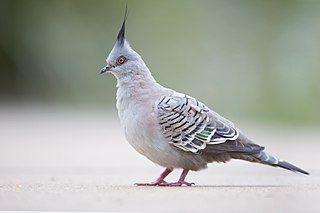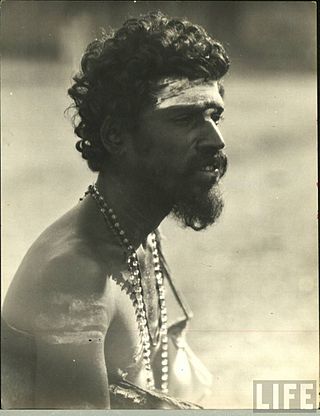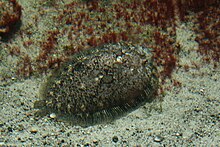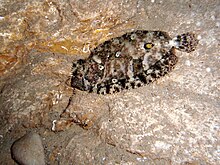
Columbidae is a bird family consisting of doves and pigeons. It is the only family in the order Columbiformes. These are stout-bodied birds with short necks and short slender bills that in some species feature fleshy ceres. They primarily feed on plants, and can be taxonomically divided amongst granivores, that feed mostly on the ground on seeds, and frugivores, that feed mostly on fruits, from branches. The family occurs worldwide, often in close proximity with humans, but the greatest variety is in the Indomalayan and Australasian realms.

Threefin or triplefin blennies are blenniiforms, small percomorph marine fish of the family Tripterygiidae. Found in tropical and temperate waters of the Atlantic, Pacific and Indian Oceans, the family contains about 150 species in 30 genera. The family name derives from the Greek tripteros meaning "with three wings".

Arundinaria is a genus of bamboo in the grass family the members of which are referred to generally as cane. Arundinaria is the only bamboo native to North America, with a native range from Maryland south to Florida and west to the southern Ohio Valley and Texas. Within this region Arundinaria canes are found from the Coastal Plain to medium elevations in the Appalachian Mountains.

The chonmage (丁髷) is a type of traditional Japanese topknot haircut worn by men. It is most commonly associated with the Edo period (1603–1868) and samurai, and in recent times with sumo wrestlers. It was originally a method of using hair to hold a samurai kabuto helmet steady atop the head in battle, and became a status symbol among Japanese society.

The crested pigeon is a bird found widely throughout mainland Australia except for the far northern tropical areas. Only two Australian pigeon species possess an erect crest, the crested pigeon and the spinifex pigeon. The crested pigeon is the larger of the two species. The crested pigeon is sometimes referred to as a topknot pigeon, a common name shared with the reddish crested Lopholaimus antarcticus of Eastern Australia.

Members of the genus Lophius, also sometimes called monkfish, fishing-frogs, frog-fish, and sea-devils, are various species of lophiid anglerfishes found in the Atlantic and Indian Oceans. Lophius is known as the "monk" or "monkfish" to the North Sea and North Atlantic fishermen, a name which also belongs to Squatina squatina, the angelshark, a type of shark. The North European species is Lophius piscatorius, and the Mediterranean species is Lophius budegassa.

Harakiri is a 1962 Japanese jidaigeki film directed by Masaki Kobayashi. The story takes place between 1619 and 1630 during the Edo period and the rule of the Tokugawa shogunate. It tells the story of the rōnin Hanshirō Tsugumo, who requests to commit seppuku (harakiri) within the manor of a local feudal lord, using the opportunity to explain the events that drove him to ask for death before an audience of samurai. The film continues to receive critical acclaim, often considered one of the best samurai pictures ever made as well as one of the greatest films ever made.

The topknot pigeon is a pigeon native to eastern Australia.

The New Zealand topknot is a triplefin of the genus Notoclinus, found around the North Island of New Zealand in reef areas of broken rock and brown seaweed.

Mopsus mormon is an Australian spider species of the family Salticidae. It is the sole species in the genus Mopsus. It is found in New Guinea and eastern Australia. It is commonly called the green jumping spider.

Notoclinus is a genus of triplefins in the family Tripterygiidae.

Euroschinus falcatus is a large tree in the mango and cashew family Anacardiaceae, found along almost the entire east coast of Australia from Cape York Peninsula to Jervis Bay. Common names include blush cudgerie and maiden's blush.

Zeugopterus norvegicus, the Norwegian topknot, is a species of turbot native to the northeastern Atlantic Ocean. This species grows to a length of 12 centimetres (4.7 in) SL. This species is sometimes classified in the monotypic genus Phrynorhombus.

Zeugopterus punctatus, the common topknot, is a species of left eyed flatfish in the family Scophthalmidae, from the eastern Atlantic Ocean.

Zeugopterus regius, Eckström's topknot or Bloch's topknot, is a small, left eyed flatfish in the turbot family Scophthalmidae found in European waters.

The Parabrahma Upanishad is one of the medieval era minor Upanishads of Hinduism composed in Sanskrit. The text is attached to the Atharvaveda, and is one of the 20 Sannyasa (renunciation) Upanishads.
















